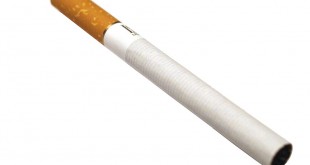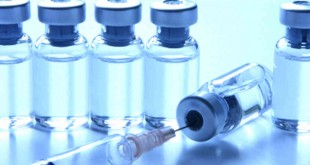Introduction
Additional ingredients in drugs or drug additives are chemical compounds that are present in drugs and food products (Pestana, Moreira & College aims, 2010). According to the Dorland’s Illustrated Medical Dictionary, additives are “compounds such as vitamin or preservatives which added to other ingredients to improve the external, improve the nutritional value and others” (Napke & Stevens, 1984).
Simon (1984) reported a long list of substances which added to pharmaceutical products and food that we take every day. In the United Kingdom, Pollock and colleagues (1989) reported that out of 2,204 drug compounds, they contain 419 drug additives. In 930 drug compounds, the study found that 52 drug additives were the harmful preservatives and dyes (Pollock, Young, Stoneham, Slater, Wilkinson & Warner, 1989). Tartrazine was a fourth dye often used in 124 drug compounds (Pollock et al., 1989). In Canada, an estimated 450 to 580 pharmaceutical products containing tartrazine (Bartle, 1976; MacCara, 1982).
Drug additives are always needed as feedstock either in tablet, injection or inhaler drugs (Committee on Drugs, 1997). The additive does not increase or affect the action of the active substances (Napke & Stevens, 1984; Committee on Drugs, 1997). The purpose of the addition done by the manufacturer is to improve the identification or external medicines (Pollock et al., 1989: Committee on Drugs, 1997) and acts as a preservative, drug carrier and for drug bioavailability (Committee on Drugs, 1997). For example, sulphite is used as an antimicrobial and antioxidant that stabilizes drugs to make it long-lasting (Pollock et al., 1989; Miyata, Schuster & Schellenberg, 1992; Committee on Drugs, 1997; Vally & Misso, 2012).
If we look at the mechanism of action of drug additives, sulphite can cause unwanted consequences, but the reaction is still unknown (Tarlo & Sussman, 1993). Among pharmaceutical products containing sulphite are topical anti-fungal drugs and steroids (Vally & Misso, 2012), injection emergenciy drugs such as epinephrine, dexamethasone, dobutamine or dopamine, and local anaesthesia (Smolinske, 1992). Different to tartrazine, it was found to stimulate factor inhibitor derived leukocytes and lymphocytes, which play a role in intermediate cells (Tarlo & Sussman, 1993). Examples of pharmaceutical products containing tartrazine are vitamin C products of Pfizer and colchicine products from Abbott (Bartle, 1976).
Example of Drug Additives
Drug additives that are known to trigger asthma attacks are as follows :
- Sulphite (e.g., sulphur dioxide, sodium sulphite, potassium or sodium metabisulphite and potassium or sodium bisulphite).
- Uses :
- As a preservative or antioxidants in:
- Inhaler solution (Committee on Drugs, 1997) or
- Local anaesthesia (Lukawska, Caballero, Tsabouri & Dugué, 2009).
- Anti-microbial agent to control the growth of bacteria (Simon, 1984).
- Detrimental effects :
- In theory, it could trigger a severe asthma attack because of it’s wide use widely used in pharmaceutical products (Simon, 1984; Lukawska et al., 2009).
- However, it lacks of support from the research data (Lukawska et al., 2009).
- Review by Müthrich and Huwyler (1989) found that it can causes asthma attacks, includes fatalty (life-threatening).
- Tartrazine
- Uses : as a yellow colouring agents (Tarlo & Sussman, 1993).
- Detrimental effects :
- Patients who are sensitive to aspirin are also sensitive to tartrazine (MacCara, 1982).
- Studies have shown these agents trigger asthma attacks in between 8 to 25% (Stenius & Lemola, 1976; Tarlo & Broder, 1982).
- Patients who avoid taking these substances or controlled his/her diet showed better asthma control (Weber, Hoffman, Raine & Nelson, 1979; Spector, Wangaard & Farr, 1979; Genton, Frei & Pécoud, 1985).
- However, the study by Pestana and colleagues (2010) contradicts earlier findings. found the opposite. Tartrazine is very rarely trigger asthma attacks. rare or not significant trigger of asthma attacks, as reported previously.
Drug Additives – when the need arises :
If you need to take or use medicines containing drug additives, please :
- Get information on the drug registration before use.
- Please visit www.bpfk.gov.my to review products that are registered with the authorities.
- This is to ensure that the product is safe and effective.
- It should be noted that each drug could cause detrimental effects of its own.
- Read the package insert before taking medicines, to understand the contents of the medication, its directions for use and side-
- Pollock and colleagues (1989) reported that a complete information on the medicines compounds or drug additives is hard to find
- This is because the information is not disclosed on the label of the medicine (MacPherson, 2001).
- Inform the doctor if you know any drug additives that could trigger your asthma attacks (Tarlo & Sussman, 1993).
- Report adverse effects after the use of medicines containing suspected drug additives, especially among patients who are sensitive to aspirin, for the purpose of recording inside the patient’s medical record. This is because the prevalence sensitivity to :
- Sulphite between 5 to 10% (Mathison, Stevenson & Simon, 1985; Vally & Misso, 2012) in 10 to 20 minutes after intake (Tarlo & Sussman, 1993).
- A total of 250 cases were reported in the United State due to adverse effects, including asthma attacks, seizures, abdominal pain and diarrhoea, nausea and death. In Canada, one death and 10 cases have been reported related to sulphite (Yang & Purchase, 1985).
- Tartrazine content in medicines, proposed 1 in 10,000, or less than 20% (MacCara, 1982).
- Patients are entitled for information or advice on preventive measures or precautions (Yang & Purchase, 1985).
References
- Bartle, W.R. (1976). Tartrazine-containing drugs. CMA J, 115, 332-333.
- Committee on Drugs. (1997). ”Inactive” Ingredients in Pharmaceutical Products: Update (Subject Review). Pediatrics, 99;268-278.
- Genton, C., Frei, P.C. & Pécoud, A. (1985). Value of oral provocation tests to aspirin and food additives in the routine investigation of asthma and chronicurticaria. J Allergy Clin Immunol, 76, 40-45.
- Lukawska, J., Caballero, M.R., Tsabouri, S. & Dugué, P. (2009). Hypersensitivity to local anaesthetics – 6 facts and 7 myths. Current Allergy & Clinical Immunology, 22, 117-120.
- MacCara, M.E. (1982). Tartrazine: a potentially hazardous dye in Canadian drugs. CMA J, 126, 910-914.
- MacPherson, R.D. (2001). Pharmaceutics for the anaesthetist. Anaesthesia, 56, 965-979.
- Mathison, D.A., Stevenson, D.D. & Simon, R.A. (1985). Precipitating factors in asthma. Aspirin, sulphites and other drugs and chemicals. Chest, 87, 50S-54S.
- Miyata, M., Schuster, B. & Schellenberg, R. (1992). Sulfite-containing Canadian pharmaceutical products available in 1991. Can Med Assos J, 147 (9), 1333- 1338.
- Müthrich, B. & Huwyler, T. (1989). Asthma due to sulphites (article in German). Schweiz Med Wochenschr, 119 (35), 1177-1184 [abstract].
- Napke, E. & Stevens, D.G.H. (1984). Excipients and additives: hidden hazards in drug products and in product substitution. Can Med Assoc J, 131, 1449-1452.
- Pestana, S., Moreira, M. & Olej, B. (2010). Safety of ingestion of yellow tartrazine by double-blind placebo controlled challenge in 26 atopic adults. Allergol Immunopathol (Madr), 38 (3), 142-146.
- Pollock, I., Young, E., Stoneham, M., Slater, N., Wilkinson, J.D. & Warner, J.O. (1989).Survey of colourings and preservatives in drugs. BMJ, 299, 649-651.
- Simon, R.A. (1984). Adverse reactions to drug additives. Journal of Allergy and Clinical Immunology, 74, 623-630.
- Smolinske, S.C. (1992). Review of parenteral sulfite reactions. J Toxicol Clin Toxicol 1992; 30:597-606.
- Spector, L.S., Wangaard, C.M. & Farr, R.S. (1979). Aspirin and concomitant idiosyncracies in adult asthmatic patients. J Allergy Clin Immunol,64, 500-506.
- Stenius, B.S.M. & Lemola, M. (1976). Hypersensitivity to acetylsalicylic acid (ASA) and tartrazine in patients with asthma. Clin Allergy, 6, 119-129.
- Tarlo, S.M. & Broder, I. (1982). Tartrazine and benzoate challenge and dietary avoidance in chronic asthma. Clin Allergy, 12, 303-312.
- Tarlo, S.M. & Sussman, G.L. (1993). Asthma and anaphylactoid reactions to food additives. Can Fam Physician, 39, 1119-1123.
- Vally, H. & Misso, N.L.A. (2012). Adverse reactions to the sulphite additives. Gastroenterol Hepatol Bed Bench, 5 (1), 16-23.
- Weber, R.W., Hoffman, M., Raine, Jr D.A. & Nelson, H.S. (1979). Incidence of bronchoconstriction due to aspirin, azo-dyes, non-azo dyes, and preservatives in a population of perennial asthmatics. J Allergy Clin Immunol, 64, 32-37.
- Yang, W.H. & Purchase, E.C.R. (1985). Adverse reactions to sulphites. Can Med Assos J, 133, 865-867,880.
| Last Reviewed | : | 19 May 2015 |
| Writer | : | Suhadah bt. Ahad |
| Accreditor | : | Tn. Haji Abdul Malek b. Abd Aziz |
 PENDIDIKAN PESAKIT Kementerian Kesihatan Malaysia
PENDIDIKAN PESAKIT Kementerian Kesihatan Malaysia


